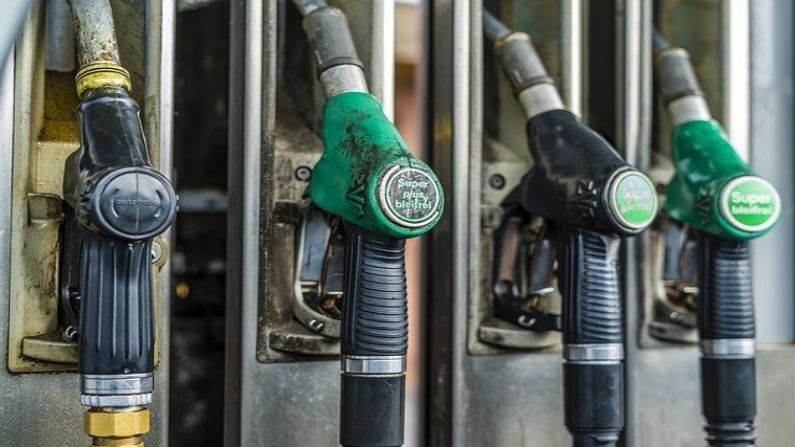India’s fuel demand slips to nine-month low in May
Fuel demand fell 1.5% to 15.1 million tonnes despite the low base of May 2020 and was down 11.3% when compared to the previous month
- Press Trust of India
- Last Updated : June 11, 2021, 17:40 IST

New Delhi: India’s fuel demand in May slumped to its lowest in nine months as restrictions to curb the second wave of Covid infections stalled mobility and muted economic activity.
Fuel demand fell 1.5% to 15.1 million tonnes despite the low base of May 2020 and was down 11.3% when compared to the previous month, according to data from the Petroleum Planning and Analysis Cell (PPAC) of the oil ministry. India was under one of the world’s strictest lockdowns in May last year, which brought all mobility and economic activity to a grinding halt.
This year, though the infection rate is much severe, restrictions are localised. Personal mobility is not as hampered as last year and more factories have remained open while cargo movement between states too hasn’t been as badly affected.
Petrol consumption at 1.99 million tonnes in May was up 12% over the previous year, it was down 16% over April and 27% over the pre-Covid era.
Diesel sales were up marginally to 5.53 million tonnes year-on-year but were down 17% over April and 29% over the pre-Covid period.
With travel restrictions curtailing airline operations, ATF sales fell by 36% to 2,63,000 tonnes month-on-month but were more than double of 1,10,000 tonnes consumption in May 2020. Pre-Covid ATF demand was 6,80,000 tonnes. Sales of domestic cooking gas LPG, the only fuel to have shown growth in consumption during the height of the first nationwide lockdown, was almost flat at 2.16 million tonnes when compared to the previous month, but was 5.5% lower than the last year. It was, however, 5.5% higher than pre-Covid May 2019. This is because the government gave free cylinders as part of the Covid-19 relief package.
Consumption of bitumen, which is used in road construction and is an indicator of economic activity, was down 19% month-on-month and near 10% year-on-year.
India’s new coronavirus cases have fallen from over 4 lakh to 91,702 and deaths from the infection dropped to 3,403 from over 4,000 a few weeks back, according to the health ministry data.
“We were near pre-Covid level in March 2021, but new restrictions due to the second Covid-19 wave have temporarily reduced the demand for both personal mobility and industrial goods movement,” an industry official said.
“Local fuel consumption will start to look up this month when the second pandemic wave is expected to weaken.” Declining fuel sales reduced crude intake by refiners, reducing the operating run rate by 85-86%.
OPEC in its monthly oil market report saw India’s oil demand climbing by 10.82% to 5 million barrels per day in 2021.
“Daily new Covid-19 cases increased in May, forcing states to implement lockdowns and other restrictions that led to a steep decline in mobility,” it said.
“As Covid-19 cases come under control and restrictions are eased towards 3Q21, oil demand, led by transportation fuel, is projected to show solid gains throughout the remainder of the year.” For the time being, India’s Covid-19 curve may begin to plateau as the state-led lockdown strategy helped in reducing the daily cases, as well as keeping the effective reproduction rate below 1.
But, uncertainty will remain high mainly related to a possible new wave of Covid-19 or the emergence of new variants, in addition to the pace of vaccinations in the country.
Moreover, high retail prices and the excise tax policy add uncertainty going forward, it said, adding oil demand growth is anticipated to pick up pace in 2H21, driven by the low baseline and an uptick in petrol and diesel demand in transportation, construction and agriculture.
“India’s crude imports recovered from a five-month low in April to average 4.5 million barrels per day,” it said.
“The vicious surge in COVID-19 cases which reached record levels in May will likely weigh on demand for crude imports for May and June, with local refiners expecting the situation to improve in July. Constrained domestic consumption could free up product for exports over the period.”
Download Money9 App for the latest updates on Personal Finance.
Related
- सुरक्षा मानदंडों को पूरा करने की बढ़ती लागत की वजह से दाम बढ़ा रही हैं कार कंपनियां
- ओला इलेक्ट्रिक ने S1 Zen3 स्कूटर की आपूर्ति शुरू की
- बासमती चावल पर GI टैग पाने के लिए भिड़े भारत- पाकिस्तान, क्यों खास है यूरोपियन यूनियन की ये मुहर
- आ गया नया इनकम टैक्स बिल, जानें अब ओल्ड और न्यू रिजीम में कहां-कहां बचेगा पैसा
- BlackRock भारत में देगी 1200 लोगों को नौकरी, AI एक्सपर्ट के लिए जल्द शुरू होगी हायरिंग
- Budget Highlights 2025: 12 लाख तक कोई Income Tax नहीं, कैंसर की दवाइयां होंगी सस्ती; जानें 10 बड़ी बातें

